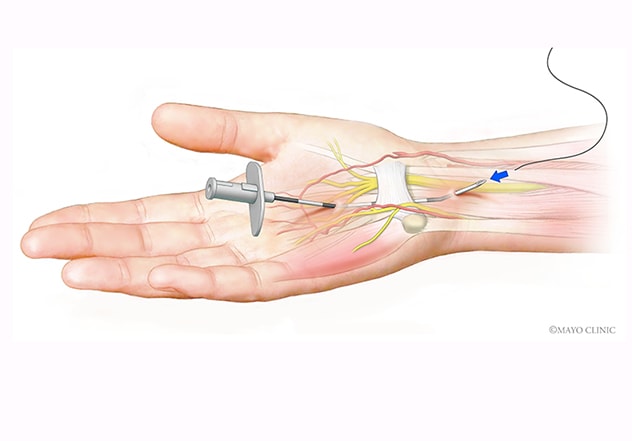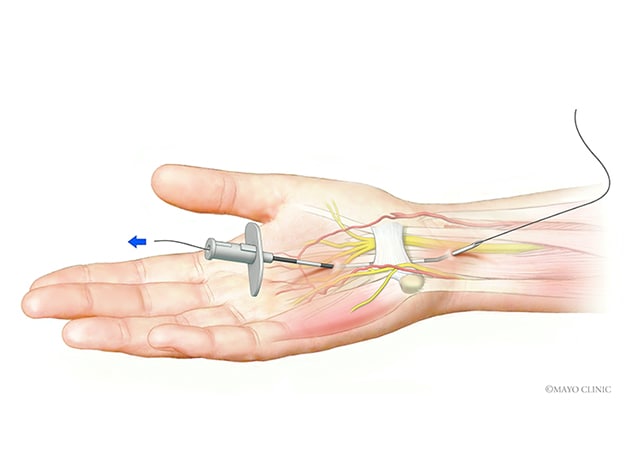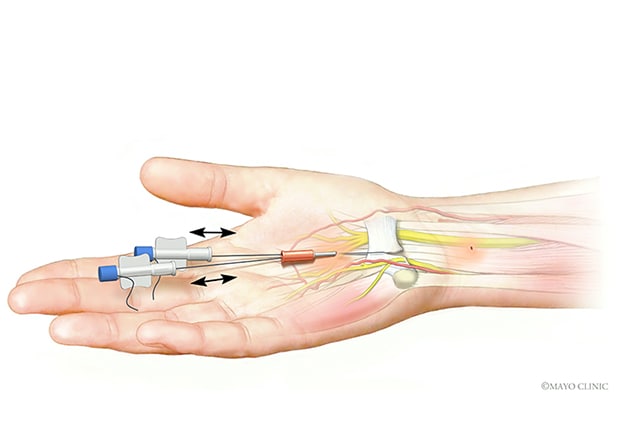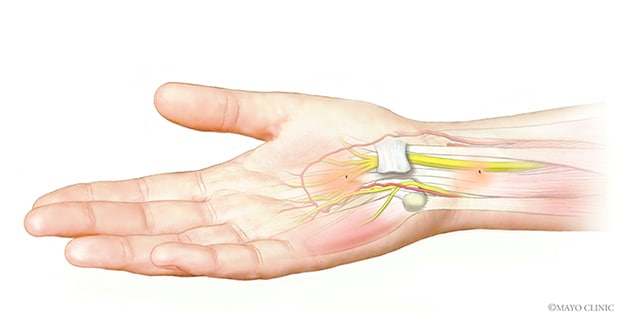Feb. 16, 2021
Mayo Clinic is one of the few orthopedic surgery centers that offer ultrasound-guided intervention for carpal tunnel release. The minimally invasive treatment, which uses a thread to dissect the transverse carpal ligament, is done under local anesthesia.
"The approach is designed to minimize soft tissue dissection and injury," says Alexander Y. Shin, M.D., an orthopedic surgeon at Mayo Clinic in Rochester, Minnesota. "Mayo Clinic has performed about 75 of these procedures, and the outcomes are very good. Patients recover in about two weeks instead of the four to six weeks needed after open surgery."
Carpal tunnel syndrome is common, and an estimated 71% of patients receive surgical intervention as their primary treatment. The estimated cost of medical care for carpal tunnel syndrome in the United States is $2 billion a year, with median lost work times of just under 30 days. Surgical treatment most often involves an open procedure. Endoscopic approaches are usually associated with less postoperative pain and a faster return to work, but also with increased risk of nerve injury and incomplete release.
Step 1

Step 1
Under ultrasound guidance, a needle is passed under the carpal tunnel and above the median nerve, and a cutting thread is passed through the needle's tip.
Step 2

Step 2
The needle is passed above the carpal tunnel, using the same entry and exit points as the first pass.
Step 3

Step 3
Cutting thread is again passed through the needle, creating a loop.
Step 4

Step 4
The ends of the cutting threads are gently tugged, to cut the ligament.
Step 5

Step 5
The carpal tunnel ligament has been severed with an incisionless procedure.
The incisionless technique — known as thread ultrasound-guided carpal tunnel release — is performed by Dr. Shin and Jeffrey S. Brault, D.O., a physical medicine and rehabilitation specialist at the Rochester campus of Mayo Clinic.
Ultrasound is used to identify the medial nerve at the level of the wrist, and to determine an entry point in the palm and exit point in the wrist for specialized needles used in the procedure. Those sites are anesthetized. Under continued ultrasound guidance, a modified Tuohy needle is passed under the carpal tunnel and above the median nerve by hydrodissection. The needle's tip is pushed above the exit point, and a cutting thread is passed through the needle. The Tuohy needle is then passed above the carpal ligament using the same entrance and exit needle holes as the first needle pass, and the cutting thread is passed through the needle.
"That creates a complete loop around the ligament, with no incision," Dr. Shin says. "Then, under direct visualization, we pull the two threads back and forth to cut the ligament." The procedure takes about 10 to 15 minutes.
Afterward, the patient has two needle holes that are dressed with a small adhesive dressing. The patient can remove the dressing after 24 hours and start gentle activities as tolerated.
Dr. Shin notes that one of his patients had the incisionless procedure to treat carpal tunnel syndrome so severe that the pain consistently woke him at night. The patient was unable to take the weeks off work that are generally needed after open surgery. "We did the procedure, and he was back at work the next day," Dr. Shin says. "This is an innovative technique that is changing patients' lives."